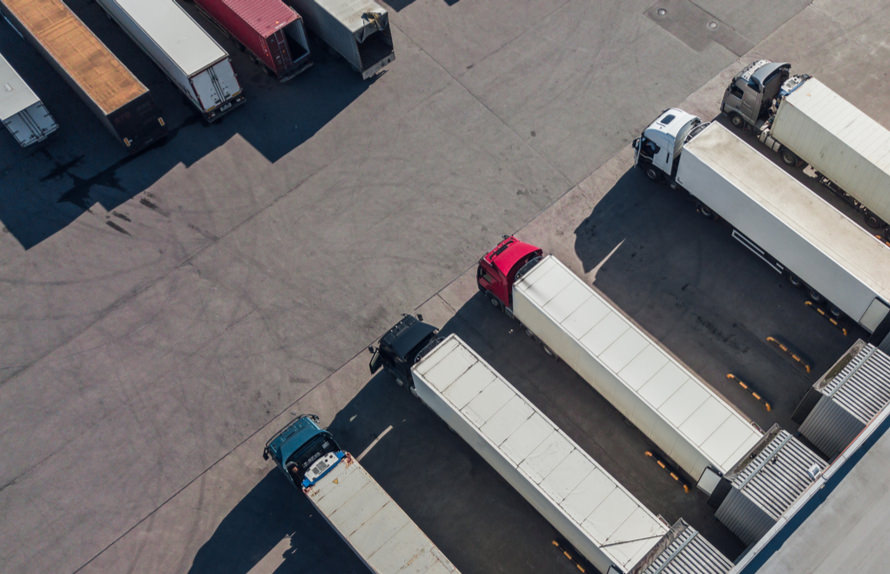
Shipping expertise is a critical part of fulfillment and logistics because it touches every aspect of an ecommerce brand’s operations — from cost control to customer experience. When done right, it helps brands deliver fast, affordable, and reliable service, all while protecting margins and enhancing customer satisfaction.
Shipping expertise plays a key role in scalability. As a business grows, logistics become more complex: more SKUs, more customers across more geographies, and higher peak-season volume. A fulfillment partner that understands shipping can help you scale smoothly, adapt your strategies, and maintain agility even as complexity increases.
True shipping expertise enables data-driven decisions. A good 3PL will analyze shipping performance, costs, and delivery trends to continually improve your strategy. For brands expanding internationally, this knowledge becomes even more critical — navigating customs, duties, and compliance issues takes experience and attention to detail.

Smart Questions to Ask Your 3PL's Transportation Team — and What to Listen For
1. What carrier relationships do you have, and how do you negotiate rates?
A strong 3PL should have pre-negotiated, volume-based discounts with major and regional carriers. They should be transparent about rate structures and proactively optimize cost based on your order profile and delivery zones.
2. Do you support multi-carrier strategies, including regional carriers and zone-skipping, to optimize both cost and speed?
They should provide dynamic carrier selection based on delivery speed, destination, and cost — not just default to one or two big players. Look for flexibility and tools that allow for automatic routing logic to minimize zones and transit time.
3. How do you measure and manage carrier performance, especially when multiple partners are involved?
Your 3PL should track key metrics like on-time delivery rates, damage/loss incidents, and exception handling per carrier. They should use this data to make ongoing carrier adjustments and share performance reports with you regularly.
4. What happens when a primary carrier misses a delivery window or service level agreement?
A reliable 3PL should have escalation protocols and backup carriers in place. They should also proactively handle claims and customer communication to minimize disruption and brand impact.
“DCL noticed that we were paying too much in shipping fees. with one carrier. As things happen, this came to light in the middle of summer, Sutro’s busiest season. So, in the heat of summer, Sutro, a swimming pool product, getting a bunch of orders in, you wouldn’t imagine it’s that easy to just spin up a new shipping service. But DCL was able to do that, and it was incredibly smooth. We ended up saving 20% on our overall shipping costs.”
5. How do you help ecommerce brands scale their shipping operations without losing agility or control?
Look for systems that scale automatically with your growth — like flexible warehouse networks and API integrations. A good 3PL will also offer strategic shipping consultations to evolve your approach as you grow.
6. Can your system integrate with my ecommerce platform and marketplaces to streamline order-to-ship workflows?
The best 3PLs offer plug-and-play integrations with Shopify, Amazon, WooCommerce, etc. They should automate order routing, tracking updates, and return processing to reduce manual work.
7. Do you provide real-time tracking and full shipment visibility for customers and internal teams?
Your 3PL should offer easy-to-use tracking portals, live shipment statuses, and proactive alerts. This helps you reduce WISMO (Where Is My Order) inquiries and improves trust with customers.
8. What international shipping capabilities do you offer, including customs handling and landed cost calculation?
A competent 3PL will handle documentation, duties, and taxes, and offer tools to calculate total landed costs at checkout. This helps reduce cart abandonment and delivery delays abroad.
9. How do you protect clients from carrier price hikes or service downgrades over time?
A proactive 3PL should continuously renegotiate carrier contracts, diversify options, and run quarterly cost reviews. They should also keep you informed of changes and pivot strategies if needed.
10. Do you offer data and insights that help optimize carrier mix, shipping zones, and cost-efficiency without sacrificing customer satisfaction?
Look for platforms that provide shipping heatmaps, delivery performance trends, and cost-per-shipment analytics. A strategic 3PL partner should use this data to help you strike the right balance between cost and customer experience.
Why an Agile, Diverse Shipping Strategy is the Best Option
A 3PL with deep shipping knowledge doesn’t just pick, pack, and ship orders — they strategically select the best carrier mix, optimize delivery zones, and make decisions that reduce cost-per-shipment without compromising on speed. This is especially important in today’s market, where customer expectations are shaped by major players like Amazon. Fast, transparent delivery is no longer a nice-to-have — it’s expected.
Resilience is a big factor in a healthy shipping strategy. When a carrier fails to deliver, raises rates, or experiences delays, a shipping-savvy 3PL knows how to pivot — whether by rerouting through regional carriers, renegotiating rates, or managing exceptions proactively. To minimize disruptions to both your operations and your customers’ experiences, it’s important to diversify your shipping options.
A diverse carrier selection gives ecommerce brands the flexibility to choose the best shipping choice for each order based on speed, cost, and destination. It helps mitigate risk when a primary carrier experiences delays, service outages, or rate increases.
Using multiple carriers also allows businesses to optimize for regional delivery, often reducing transit times and shipping zones. It supports better cost control by encouraging carrier competition and avoiding reliance on one provider’s pricing. Ultimately, a multi-carrier strategy ensures more consistent delivery performance and a better customer experience.
Bottom Line
Shipping is not just the final step in fulfillment — it’s a strategic lever. When your logistics partner understands shipping inside and out, you gain a competitive edge in speed, cost, reliability, and customer trust.
This post was written by Maureen Walsh, Marketing Manager at DCL Logistics. A writer and blogging specialist for over 15 years, she helps create quality resources for ecommerce brands looking to optimize their business.








